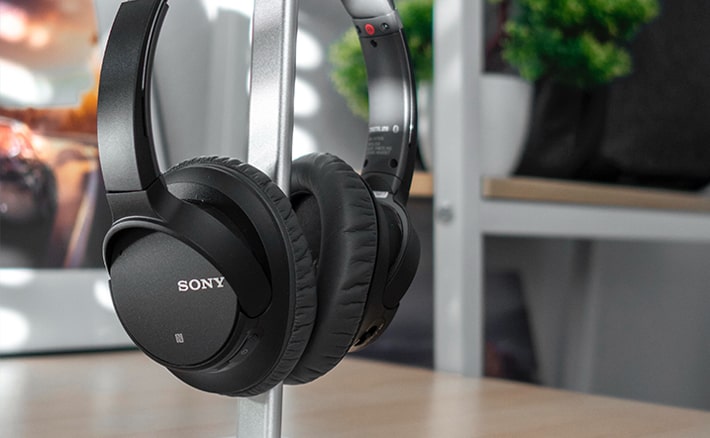Blog
How to Choose a Hi-Fi Stereo – Bring Music to Life the Right Way
Imagine this: the lights are dim, your favourite song begins, and suddenly you’re not just hearing music — you’re feeling it. The guitar hums with warmth, vocals surround you with clarity, and every beat hits with precision. That’s the magic of a Hi-Fi stereo system — it turns ordinary listening into an immersive experience that transports you straight into the heart of the music.
But with so many options and technical terms out there, choosing the right Hi-Fi stereo can feel overwhelming. Should you go for an amplifier and separate speakers? A compact all-in-one system? What about streaming options? Don’t worry — we’ll guide you step by step through how to choose the perfect setup for your home and lifestyle.
What “Hi-Fi” Really Means
“Hi-Fi” stands for High Fidelity, meaning sound reproduction that’s as true as possible to the original recording. Unlike standard speakers or Bluetooth soundbars, Hi-Fi systems are designed for accuracy, depth, and emotional connection — so you hear every subtle note exactly as the artist intended.
A true Hi-Fi system doesn’t just play music — it recreates it.
Step 1: Know What You Want to Hear
Before diving into brands or specs, ask yourself:
Do you love warm, deep tones like vinyl records produce?
Or are you more into crisp, detailed digital sound for modern tracks?
Will you use your system for music only, or also for movies and gaming?
Understanding your listening style helps determine the right balance between power, clarity, and tone.
💡 Pro Tip: If you love detailed vocals and acoustic instruments, go for systems with a neutral sound signature. If you want room-shaking bass, look for amplifiers with high wattage and speakers with larger drivers.
Step 2: Choose Between an All-in-One or Component System
Hi-Fi setups generally fall into two categories:
🎵 All-in-One Systems
These are compact, modern, and easy to set up — perfect for apartments or minimal spaces. Many modern systems include streaming features like Bluetooth, Wi-Fi, and even Spotify Connect.
Examples: Sonos Five, Marantz Melody, or Denon CEOL Series.
Best for: Those who want simplicity without sacrificing sound quality.
🎶 Component Systems
This setup lets you mix and match — an amplifier, CD player, DAC (digital-to-analog converter), and separate speakers. It gives you flexibility to upgrade each part over time.
Best for: Audiophiles who want precision and control over their sound.
Step 3: Picking the Perfect Speakers
Speakers are the soul of your Hi-Fi system — they make the biggest difference in sound quality.
There are three main types:
Bookshelf Speakers – Compact, ideal for smaller rooms; great clarity and imaging.
Floorstanding Speakers – Larger, more powerful bass; perfect for spacious rooms.
Wireless Hi-Fi Speakers – Offer flexibility with minimal cables and modern streaming options.
When matching speakers, check the impedance (measured in ohms) and power handling to ensure they suit your amplifier.
💡 Pro Tip: Always listen before buying. The same speaker can sound different in various rooms due to acoustics.
Step 4: The Amplifier – The Heart of Your System
Your amplifier powers the speakers and controls how they sound.
There are two main types:
Integrated Amplifiers: Combine preamp and power amp — easier to set up.
Separate Amps: Offer more control, detail, and upgradability.
For modern users, amplifiers with Bluetooth, Wi-Fi, or USB inputs are great for streaming music from phones or computers.
Popular picks: Cambridge Audio AXA35, Yamaha A-S301, or NAD C 368.
Step 5: Don’t Forget Modern Connectivity
Hi-Fi today is more than vinyl and CDs. Many systems now come with digital streaming support, allowing you to enjoy Spotify, Apple Music, or Tidal in high quality. Look for:
Bluetooth aptX HD for wireless streaming.
Wi-Fi & Ethernet for online playback.
DAC support for ultra-clear digital-to-analog conversion.
This way, you can enjoy both classic analog warmth and digital convenience in one setup.
Step 6: Match It to Your Room
The room you place your stereo in has a massive impact on sound quality.
Small rooms: Go for bookshelf speakers or compact systems.
Large rooms: Floorstanding speakers work best for sound spread and bass.
Hard floors: Add a rug to reduce echo and improve balance.
💡 Pro Tip: Speaker placement matters! Keep them at ear level and avoid pushing them against walls for the best clarity.
Step 7: Listen, Compare, and Trust Your Ears
At the end of the day, numbers and specs don’t tell the full story. Listen to your favourite song on different systems.
Does it make you feel something?
That’s your Hi-Fi match.














